5 Questions for ... David Sim – The DDP formula
in English / Interview: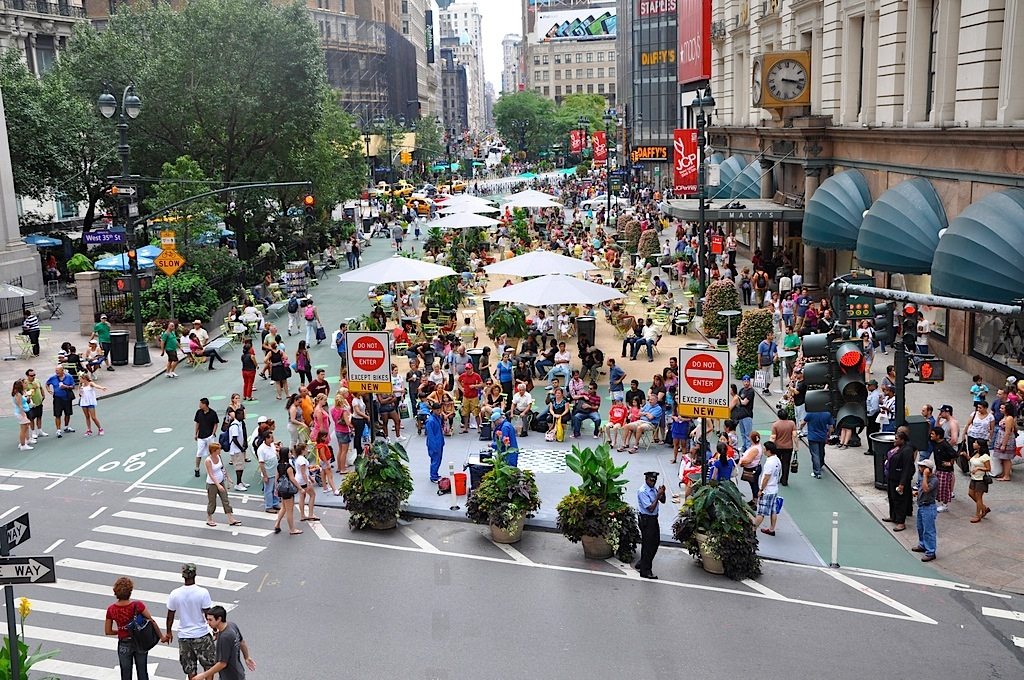
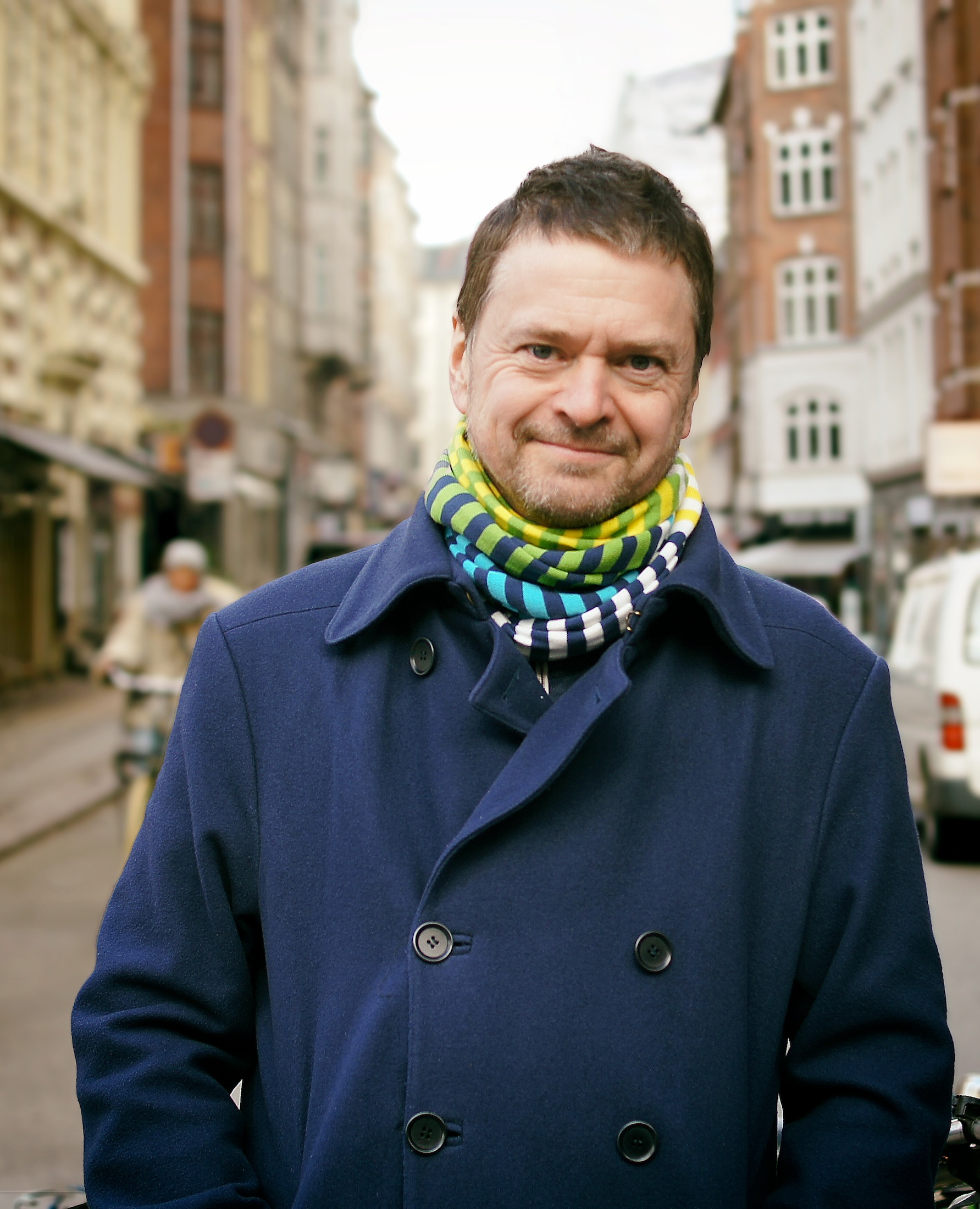
David Sim
Partner and Creative Director at Gehl Architects. "My formula for a high quality of life must include diversity. It can be communicated as density + diversity ~ proximity."
1. Please describe the philosophy of Gehl Architects.
Our philosophy at Gehl Architects is centred around people. We seek to understand how built environment affects public life through observation, experience and research, and develop long term, holistic solutions to improve the quality of life in cities over time.
2. What is your contribution and your philosophy since you’ve stepped in as partner in 2012?
Since I became a partner, I have become much more aware of how I work as a part of a team. The key thing is about figuring out the best way to share my knowledge with my colleagues and develop projects together. My particular interest and the focus for much of my work is about how to achieve denser neighbourhoods while maintaining a high quality of life. As part of this, I am writing a book, which focuses on a theory I have about quality of life in cities, and makes suggestions for simple ways to implement this theory in practice. The discussion about designing cities is often centered on urban models to achieve density. There is a lack of focus on what these various models do; that is, what are the affects of the different models on daily life and what types of qualities do they support? My formula for a high quality of life must include diversity. It can be communicated as density + diversity ~ proximity. That is, density combined with diversity increases the likelihood of proximity. Cities have to be designed to accommodate a high quantity of everyday life for people, but more importantly all kinds of people doing many different things in close proximity to each other. Having neighbours who are different from you, as well as a diverse range of opportunities nearby are two of the biggest advantages of living in a city, and are key components for a high quality of life.
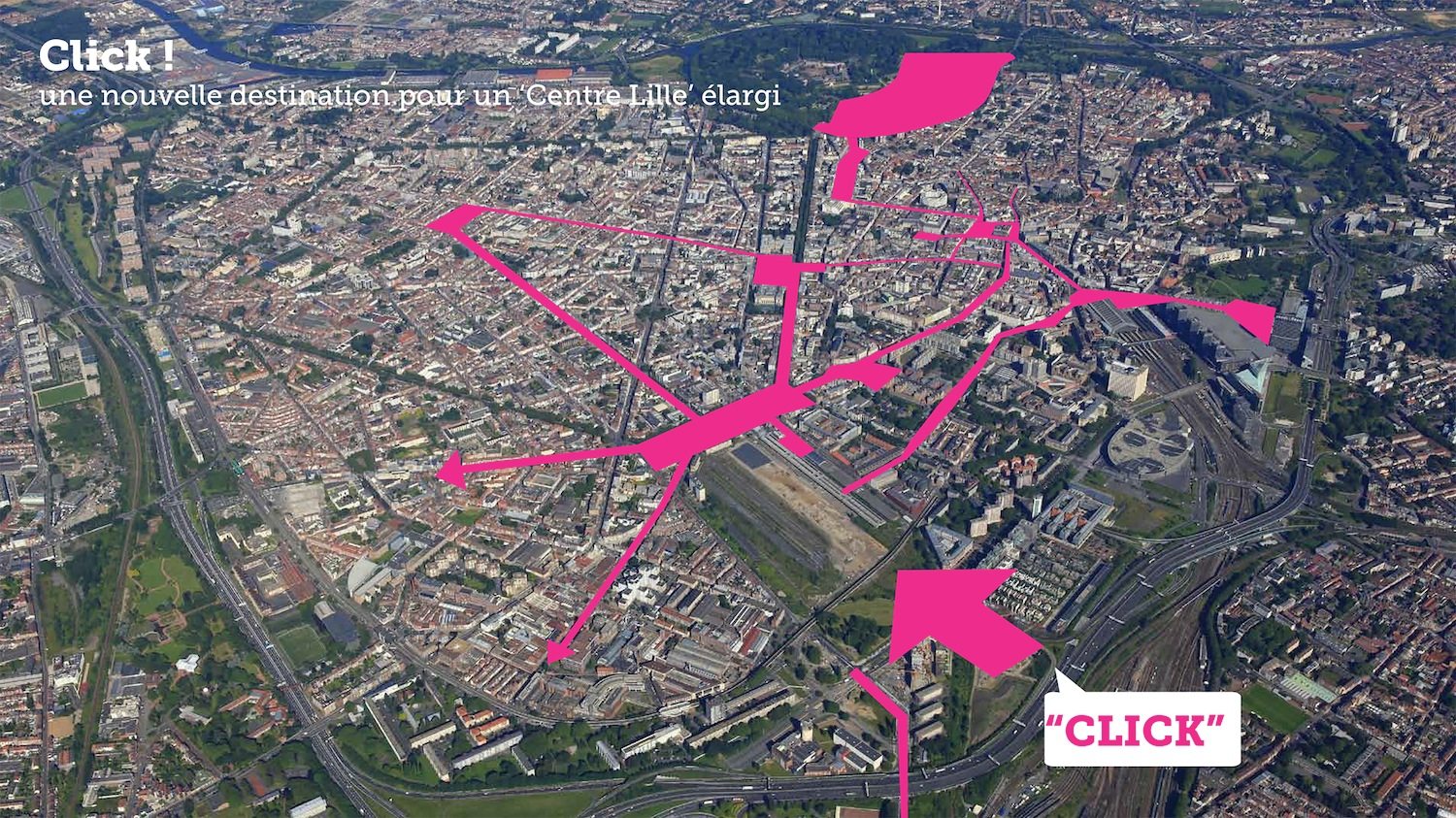
Saint Sauveur Lille, France, 2013
David Sim: "A great example of this process is St. Sauveur project that we won as a part of an urban design competition in Lille, France. We competed as the only foreign team, and were selected in the first round from 80 teams, and then later down to us and 3 French teams", David Sim
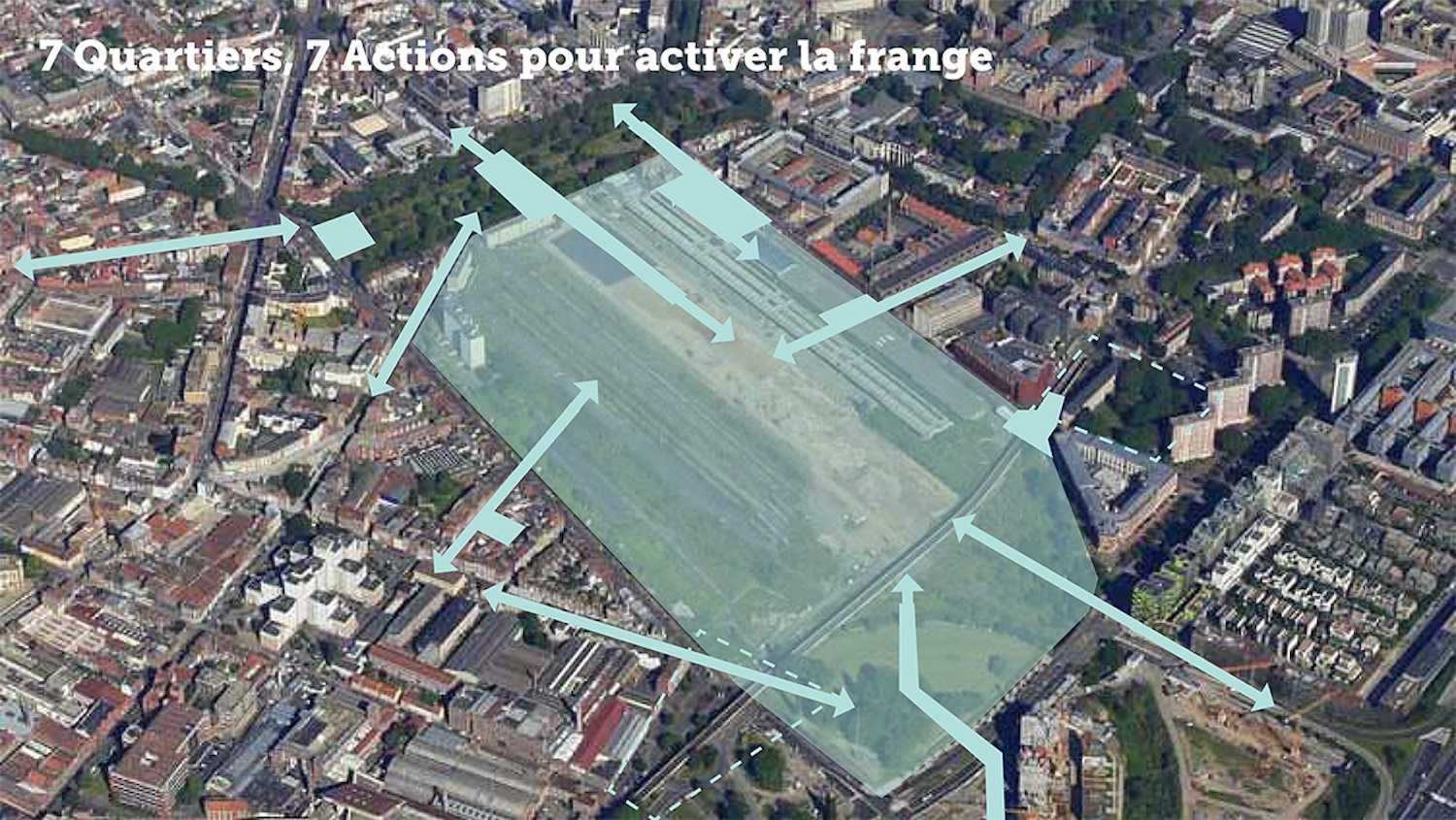
Saint Sauveur Lille, France, 2013
David Sim: "Part of our success can be attributed to the strong interdisciplinary team that we built including local architects, local engineers, French landscape architects and local environmental specialists."
3. Gehl Architects is known for its people-first and interdisciplinary approach: please explain based on a project as an example how that works.
Gehl architects are teamplayers and the specific context of every project is vital. Every project is vastly different so we try to seek team members with complimentary skill sets that work to the demands of each particular challenge. I think every project is as much about process as it is about the final product. We spend a lot of time considering how we take team members on a journey. This includes working closely with other professionals, city officials, and even members of the public. A great example of this process is St. Sauveur project that we won as a part of an urban design competition in Lille, France. We competed as the only foreign team, and were selected in the first round from 80 teams, and then later down to us and 3 French teams. Part of our success can be attributed to the strong interdisciplinary team that we built including local architects, local engineers, French landscape architects and local environmental specialists. The client, the development wing of the city, was also a part of the team so we thought it was critical that city officials from the different departments and administrations were included in the process so that the design decisions that we made were in line with the way that the city operates.
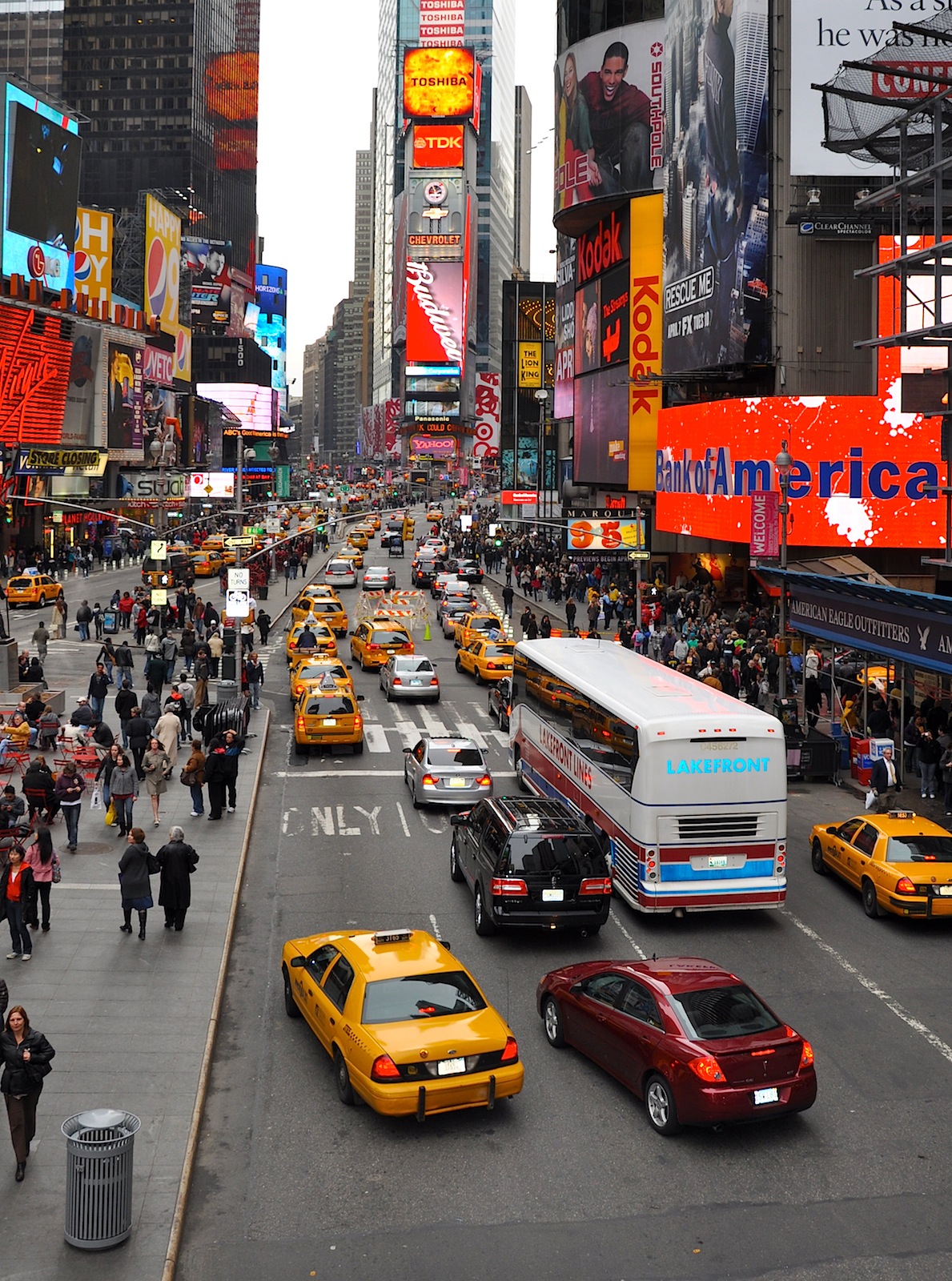
Times Square, New York City: Places for People
Before. Client: New York City, Department of Transportation (DOT). "New York was a city dominated by car culture, and the infrastructure and systems were out of date. The Department of Transport wanted to reduce traffic, increase cycling and walking, and improve public life ..." Excerpts from gehlarchitects.com
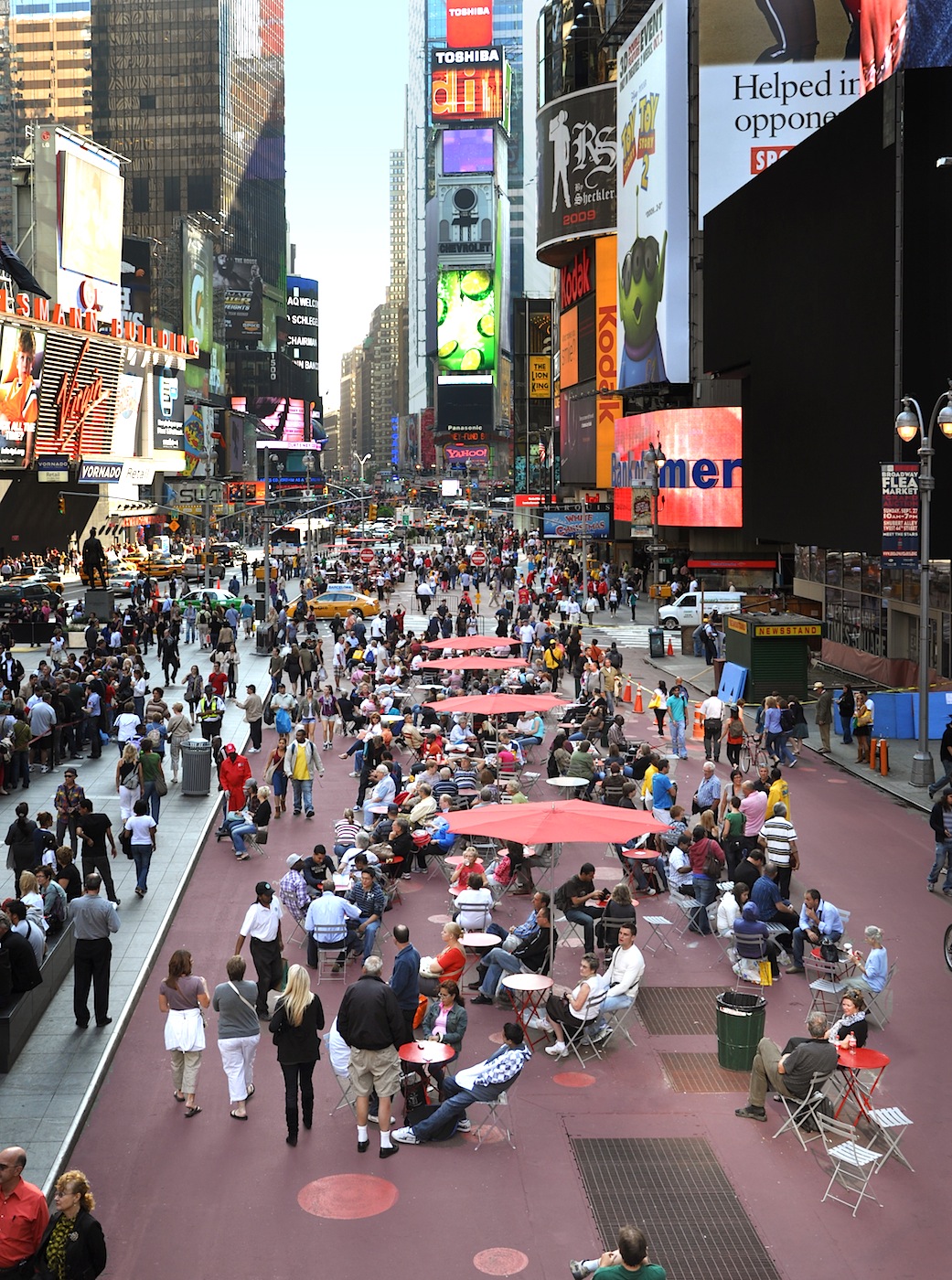
Times Square, New York City: Places for People
After. "We identified and analyzed key areas in the city, gathering the data crucial to setting new goals. Our first survey was an eye-opener in terms of who uses the streets and how they use them. We discovered that only 10% of the people on the streets were children and seniors. That 90% of the space in Times Square was for cars, yet 90% of the people there were pedestrians." From gehlarchitects.com

Herald Square, New York City
Before. " ...The survey gave us the baseline data to set new targets. These were at the core of the 'World Class Streets' report published in 2008, envisioning the transformation of existing spaces with peoplecentered design, and creating a new way to move in the city ..." Excerpts from gehlarchitects.com

Herald Square, New York City
After. " ... In Summer 2008 Broadway between Times Square and Herald Square was transformed by the flagship ‘Broadway Boulevard’ pilot. We upgraded the welcome mat we wanted to roll out for the people of New York to a red carpet. Literally overnight the major squares on Broadway from uptown to downtown were closed to traffic and temporary furniture was moved in. The positive response from New Yorkers was instant. And they were involved. Because as well as giving people the tools and skills to measure, test and refine ideas and designs at street level, one of our key services is facilitating inclusive communication. Behind the scenes in New York we talked to people across city departments and community groups face-to-face, getting people to meet each other and getting people on board ..." Excerpts from gehlarchitects.com
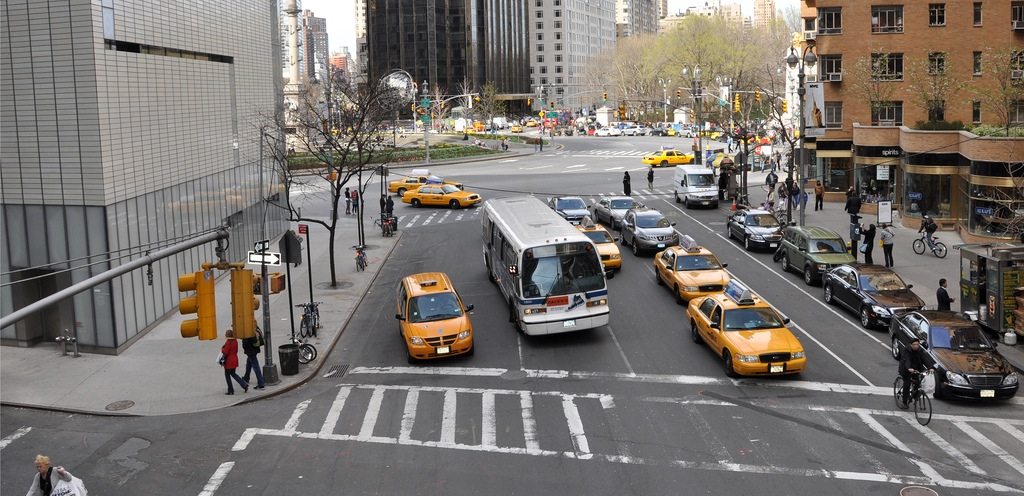
Columbus Circle, New York City
Before
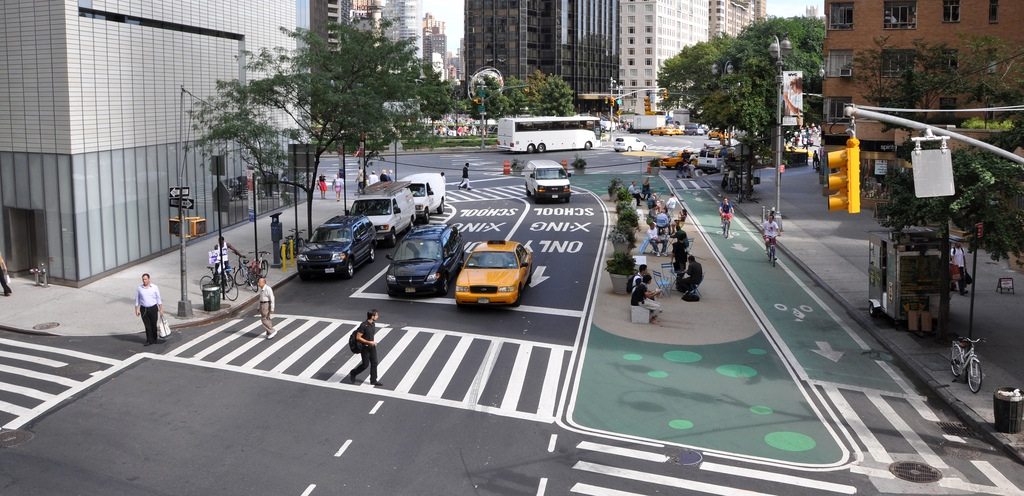
Columbus Circle, New York City
After
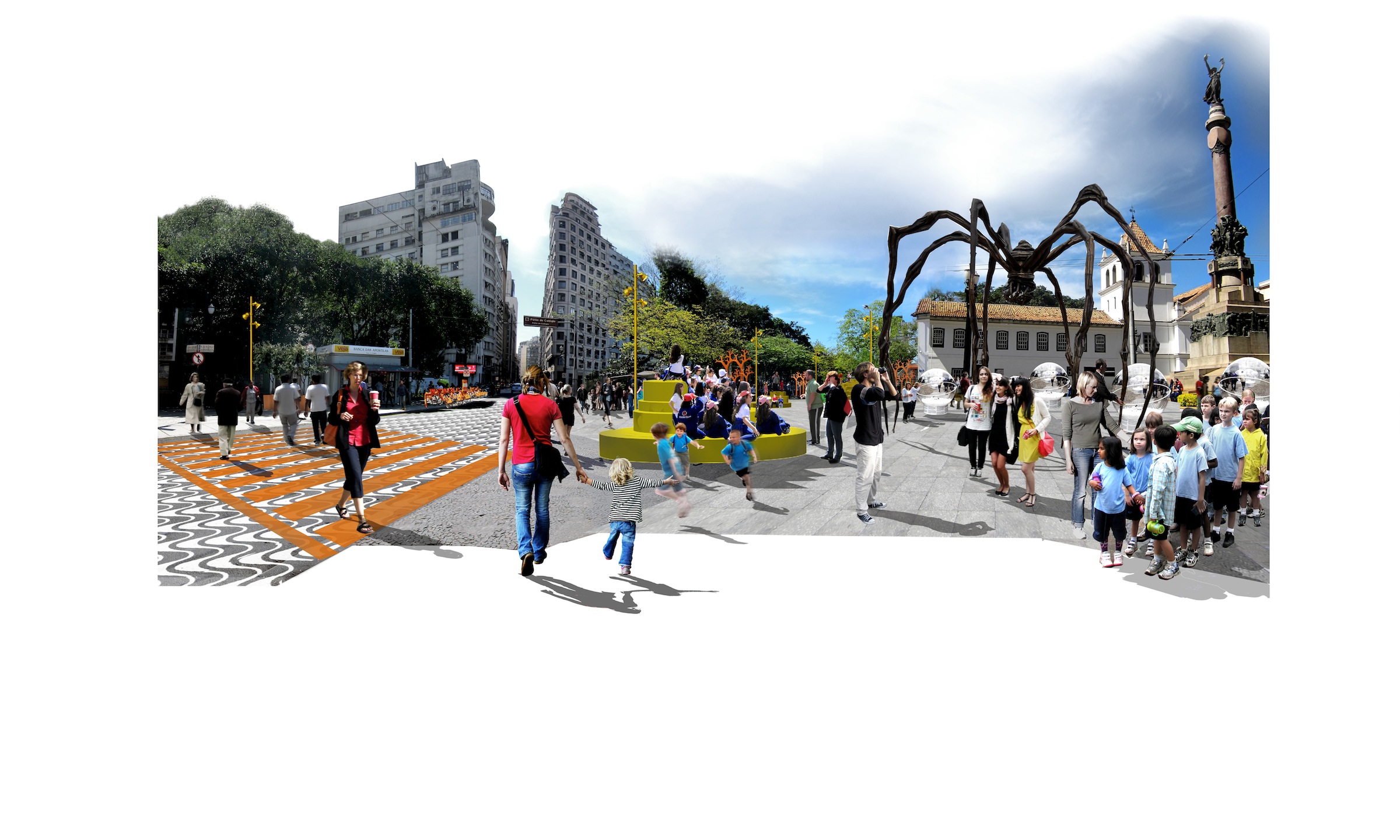
"A New Heart for São Paulo"
"São Paulo is the economic driver of Brazil, generating 1/3 of the vast nation’s GNP. The downtown areas of thriving economies are usually prosperous and in high demand, but in São Paulo exploding traffic had driven people and businesses out of the city centre, leaving empty buildings, discount outlets and parking lots in their wake. The main square sits above a highway and is bypassed by pedestrian flyovers, and there’s nothing to invite people to come down to the square. It’s run down, there’s nowhere to sit, and very little to enjoy." From gehlarchitects.com
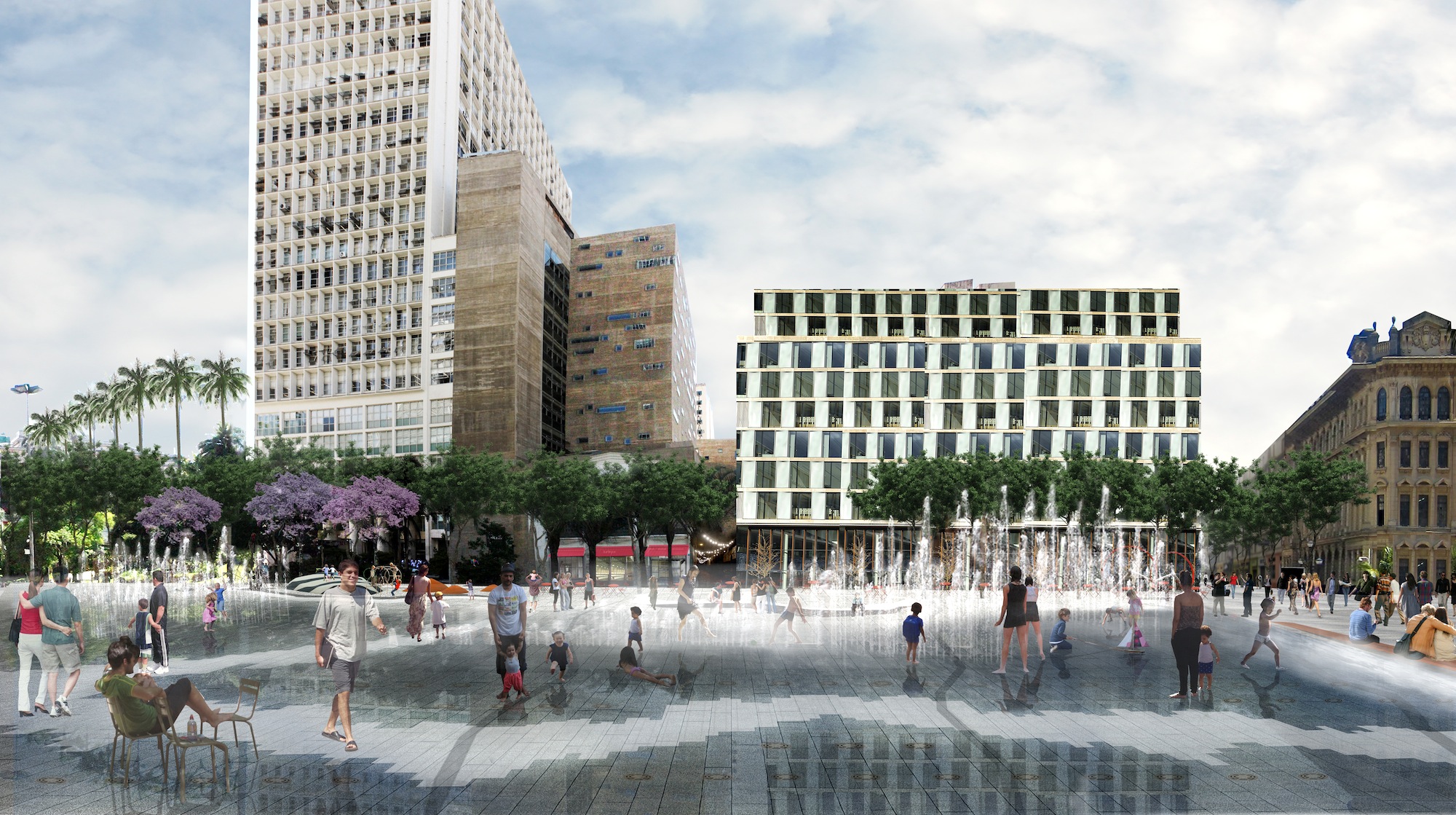
Collage of Avenida São João
"Gehl Architects conducted a series of workshops with city agencies, local universities and a whole series of NGOs and community representatives. In April 2003 we got everyone – from the head of city planning to the local mayor’s office – around the same table and on board to identify the problems and potential of their city. ... The resulting design of Anhangabaú Square is based on 4 goals: to improve access, create smaller human-scale spaces, make a more flexible city space for big events and everyday life, and activate the edges of the square by opening its building facades." From gehlarchitects.com
4. What are current projects and what are you planning for the future?
Right now Gehl has active projects on all five continents. These vary greatly and include both working with developing existing places as well as creating new places. We have broad range of clients, in the public and private sector as well as NGOs, institutions, and foundations. Some of our current work includes downtown Tokyo, which is going through exciting phase of development leading up to the 2020 Olympic games. We are also working on a development strategy for Borås, a provincial Swedish town which faces the challenge of growing by several thousand new residents. Another particularly exciting challenge is designing a brand new village inside a national park in Scotland - the first time something like this has been attempted. In the future we will be working more and more with the challenges of mobility, densification and climate change.
5. Where is your favourite spot in your hometown and why? Your favourite location abroad?
I live in the small university town of Lund in Sweden, one of my favorite spots is the south facing wall of the cathedral. Here there is a long bench facing a square and whenever the sun is out any time of year it is a great spot to sit, enjoy the weather and watch people. One of my favorite new places abroad is the T–site bookshop and garden in the Daikanyama neighbourhood of Tokyo, Japan. This is a great little cluster of dense and diverse pavilions containing bookshops, restaurants, cafes and speciality stores around a garden. They even have a small park for dogs. It is very refreshing to find a new commercial place which offers so much to the public – to a broad range of people – that invites them to come and spend time in between the buildings for free.
Gehl Architects: Profile and projects
David Sim
Born 1966, architect. He grew up in Linlithgow, near Edinburgh, Scotland and met Jan Gehl during his architecture studies at Edinburgh College of Art, where Gehl was an honorary professor. Sim joined the international urban development firm Gehl Architects in 2002 and since autumn 2012 has been Partner and Creative Director. For more than ten years David has been focusing on Masterplanning Frameworks and urban design, collaborating with other professionals in the planning and building process, applying Jan Gehl’s theories to large-scale projects. David is also renowned as an educator and lecturer, and has taught at architecture and design schools all over the world. Among his key projects was the recovery plan for Christchurch, New Zealand, after the devastating earthquake in 2011, an achievement that earned Gehl the 'Architecture of Necessity' award.
Jan Gehl
Born 1936. Gehl is a Danish architect and urban design consultant based in Copenhagen and whose career has focused on improving the quality of urban life by re-orienting city design towards the pedestrian and cyclist. He is a founding partner of Gehl Architects.
Gehl Architects
A global urban research and design consultancy based in Copenhagen, Denmark, providing people-first urban design. With Gehl Studios in Copenhagen, New York and San Francisco, they consist of an interdisciplinary team of 50 people including architects, urban designers, landscape architects, graphic designers, sociologists, anthropologists and cultural theorists. Additionally, they employ a network of internationally recognized urban experts. Architect Helle Søholt and Professor Jan Gehl founded Gehl Architects in 2000. The work of Gehl Architects builds on Jan Gehl's 40 years of extensive research on life in public space. Along with new research this continues to provide the foundation for a focus on the relationship between the built environment and people's quality of life. Gehl Architects offers expertise in the fields of architecture, urban design and city planning applying analysis through Public Space Public Life Strategies, Public Space and Street Design, and Masterplanning Frameworks. Gehl Architects has participated in project in over 50 countries and 250 cities around the world. Clients include Municipality of Copenhagen, Department of Transportation (DOT) in New York City, Melbourne City Council, The Energy Foundation in Beijing, China, Brighton & Hove City Council in the UK, City of Christchurch in New Zealand, Institute of Genplan in Moscow, among many others.
Key architects at Gehl Architects
Helle Søholt, David Sim, Henriette Vamberg, Camilla van Deurs, Ewa Westermark, Jeff Risom and Kristian Villadsen
Gehl Architects http://gehlarchitects.com/